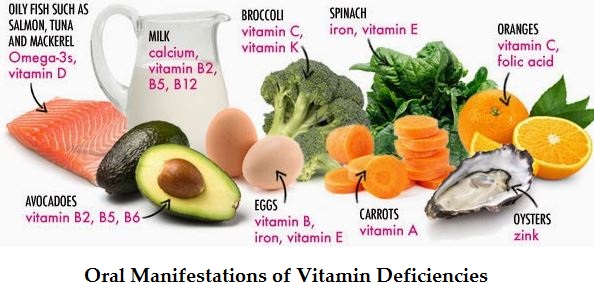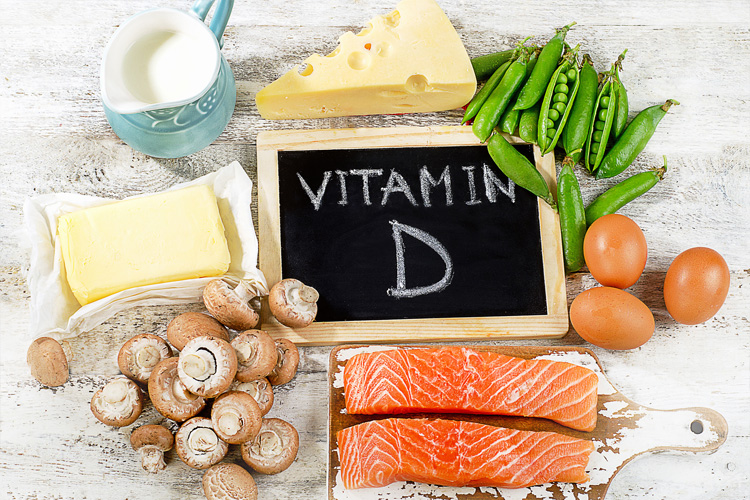Sun vs. Vitamins D and E
| Disclosure: The links on this page are "Affiliate Links" and while these are shown at no costs to our viewers, they generate commissions for our website(s) |
Before the turn of the century, people didn’t worry much about the diseases that plague modern man. Peacefully ignorant of heart disease, cancer and diabetes, they went about their day unconcerned about things like exercise, diet and vitamin supplements.
Back then, 90% of U.S. citizens worked outdoor jobs that entailed hours of physical labor under the sun. Those who worked on farms were used to being outside under the rays of the sun from dawn till dusk and ate wholesome food they grew themselves. Today, people live sedentary lives, spending their entire day indoors and eating pre-packaged meals, unaware of what what’s in them and how they’re affecting their health.
PureFormulas: Shop for health supplements, vitamins, minerals and other nutritional supplements. Fast, free shipping.

Since being driven indoors, people interested in their health have recognized the importance of getting enough exposure to the sun’s rays. Those working inside or even under the ground, need to take extra care to get outside on the weekends and supplement their diet with the vitamins and minerals their body needs. Ultraviolet rays are part of the electromagnetic light spectrum of the sun that reaches the earth in the form of light. There are actually three ultraviolet wavelengths: ultraviolet A, B and C. Ultraviolet A and B rays are capable of reaching the earth and are responsible for not only good health, but also wrinkles, skin cancers and cataracts in the eyes. Too much exposure to ultraviolet rays has been proven to be carcinogenic in humans. They are considered to be the principle cause of non-melanoma skin cancers, basal cell carcinoma and squamous cell carcinoma.
According to the U.S. Department of Health and Human Services and the World Health Organization , it’s important for people to spend at least 15 minutes, twice a week under the direct rays of the sun. When absorbed by the skin, the sun’s ultraviolet rays help the body produce vitamin D and other phytonutrients necessary for the growth and maintenance of bones and teeth. It also plays an important role in strengthening the immune system, brain, nervous system and helps regulate insulin levels, preventing diabetes. If spending time in the sun isn’t possible, taking adequate amounts of vitamin D and E can help make up the difference.

A Primer on Vitamins D and E
There are two types of vitamins used by the body: water-soluble and fat-soluble vitamins. Both types of vitamins are readily available through the diet. Water-soluble vitamins dissolve in water and are not stored in the body. They include vitamin C and B-complex vitamins. When there’s an excess of water-soluble vitamins, they’re excreted through the urine. Fat-soluble vitamins are stored by the liver. When the body needs them, they’re excreted into the blood. They include vitamins A, E, D, and K.
Vitamin D plays a critical role in the regulation of calcium and phosphorous levels in the blood – two elements for maintaining healthy bones and teeth. It also helps the intestines to reclaim calcium that would otherwise have been lost through the kidneys.
Children with vitamin D deficiencies are at risk for rickets , a disease characterized by bowlegs and softening of the bones. Older adults with low levels of vitamin D are at risk for osteomalacia , or osteoporosis that contributes to low bone density and muscle weakness.
Pregnant women deficient in vitamin D need to guard against preeclampsia , gestational diabetes and bacterial vaginosis . Conversely, pregnant women with vitamin D levels to high , were associated with food allergies in the child.
A study presented to the 249th National Meeting & Exposition of the American Chemical Society suggested that taking vitamin D supplements helped to slow, and in some cases reverse the growth rate of prostate tumors, eliminating the need for surgery or radiation therapy. "Cancer is associated with inflammation, especially in the prostate gland," says researcher Bruce Hollis. "Vitamin D is really fighting this inflammation within the gland. We don't know yet whether vitamin D treats or prevents prostate cancer," cautions Hollis. "At the minimum, what it may do is keep lower-grade prostate cancers from going ballistic."
 According to a report published in the journal,
Neurology
, vitamin D has also been shown to be a safe, and effective treatment for lowering the risk of
Multiple Sclerosis
(MS). Dr. Peter Calabresi, one of the study’s co-authors reported lower percentages of T cells in those who took vitamin D3 supplements. "These results are exciting,” said Calabresi. “As vitamin D has the potential to be an inexpensive, safe and convenient treatment for people with MS. More research is needed to confirm these findings with larger groups of people and to help us understand the mechanisms for these effects, but the results are promising."
According to a report published in the journal,
Neurology
, vitamin D has also been shown to be a safe, and effective treatment for lowering the risk of
Multiple Sclerosis
(MS). Dr. Peter Calabresi, one of the study’s co-authors reported lower percentages of T cells in those who took vitamin D3 supplements. "These results are exciting,” said Calabresi. “As vitamin D has the potential to be an inexpensive, safe and convenient treatment for people with MS. More research is needed to confirm these findings with larger groups of people and to help us understand the mechanisms for these effects, but the results are promising."
Vitamin E is a fat-soluble vitamin in the antioxidant category. It is one of 8 vitamins that naturally occur in specific compounds called tocopherols and tocotrienols . Vitamin E has been effective in treating heart, liver and neurological diseases.
Vitamin E has been shown to have three major benefits:
- Protection from anti-aging – Extended periods of exposure to the sun’s rays produce free radicals in the skin – precursors to several types of cancer. As a lipid antioxidant, vitamin E protects the skin’s DNA and reduces inflammation.
- Increased tolerance to the sun’s rays – Vitamin E, in combination with vitamin C, provides a protecting effect against the sun’s harmful rays. One study showed that subjects who took 2 grams of vitamin C a day, along with 1000 IU of vitamin E took 21% longer for their skin to burn.
- Limits the need for sunscreen – Commercially available sunscreens contain retinyl palmitate, oxybenzone, homsalate, octinoxate, phthalates, parabens and other toxic chemicals. Supplementing your diet with vitamins D and E can help reduce the need for sunscreens.
For many people, getting enough sun isn’t the problem. A light-skinned person exposed to the sun can synthesize over 20,000 IU of vitamin E in 20 minutes. But for those who do, it’s important to take supplements to insure that vitamin D blood levels are at the appropriate levels. The recommended levels of vitamin D for the human body depends on age. The following are the recommended intakes, according to the U.S. Institutes of Medicine (in International Units and micrograms. One microgram of vitamin D is equal to 40 IU):
- Infants 0-12 months - 400 IU (10 mcg)
- Children 1-18 years - 600 IU (15 mcg)
- Adults to age 70 - 600 IU (15 mcg)
- Adults over 70 - 800 IU (20 mcg)
- Pregnant or lactating women - 600 IU (15 mcg).
Recent studies have shown that up to 50% of adults and children worldwide, are deficient in vitamin D. People whose blood levels of vitamin D drops below 30 ng/ml (nanograms per milliliter) are at risk for developing thinning bones. It’s common in the elderly, infants and people with dark skin. Taking 800 IU of vitamin D can help reduce the number of hip fractures in the elderly by more than 80%.

Managing Vitamin D and E Levels
There are at least two ways to manage vitamin D and E levels: exposure to the sun and through diet. One of the easiest ways to cut down on exposure to the sun’s harmful rays is to limit your time in the sun – especially between 10:00AM and 2:00PM. For many, 10 minutes a day is enough. Common sense measures like wearing wide-brimmed hats, long-sleeved shirts can help with extended exposure. The best color fabric to wear is black – it absorbs the sun’s rays. Liberal application of sunscreens can also help. A sunscreen with a SPF factor of 30 can reduce sun absorption by over 95%.
The best way to supplement your vitamin D and E intake is through diet. The following are universally accepted foods rich in vitamin D:
|
Foods |
Amount |
IU |
|
Cod liver oil |
1 tablespoon |
1360 |
|
Herring, fresh, raw |
4 ounces |
1056 |
|
Swordfish, cooked |
4 ounces |
941 |
|
Raw Maitake mushrooms |
1 cup |
786 |
|
Salmon, sockeye, cooked |
4 ounces |
596 |
|
Sardines, canned |
4 ounces |
336 |
|
Fortified skim milk |
1 cup |
120 |
|
Orange juice, fortified |
8 ounces |
100 |
|
Tuna, canned in water |
3 ounces |
68 |
|
Egg, chicken |
1 whole large |
44 |
Foods rich in vitamin E:
|
Foods |
Amount |
% Daily value |
|
Almonds |
1 oz: 7.3 mg |
27% |
|
Spinach |
1 bunch: 6.9 mg |
26% |
|
Sweet Potato |
1 Tbsp: 4.2 mg |
15% |
|
Avocado |
1 whole: 2.7 mg |
10% |
|
Wheat germ |
1 ounce: 4.5 mg |
17% |
|
Sunflower seeds |
2 Tbsp: 4.2 mg |
15% |
|
Palm Oil |
1 Tbsp: 2.2 mg |
11% |
|
Butternut squash |
1 cup, cubed: 2 mg |
7% |
|
Trout |
3 oz: 2 mg |
7% |
|
Olive oil |
1 Tbsp: 2 mg |
7% |
ØRecommended amount of vitamin E is 15mg/day. Daily value is 27 mg/day.
The Controversy
So, with all you know, what is the best way to insure that you’re getting enough vitamin D and E? By spending time in the sun? Eating a balanced diet? Taking supplements? The answer, of course, is all of the above.
Each person needs to evaluate their current health, lifestyle and diet and make changes accordingly. Most experts recommend keeping your vitamin D blood level to 30 ng/ml or higher to avoid thinning bones. The current recommendation for daily vitamin D3 supplements is 600 international units, up to age 70. Whenever possible, manage your vitamin D and E intakes by eating a balanced diet rich in the foods listed above. But, at the end of the day, the choice is yours.




